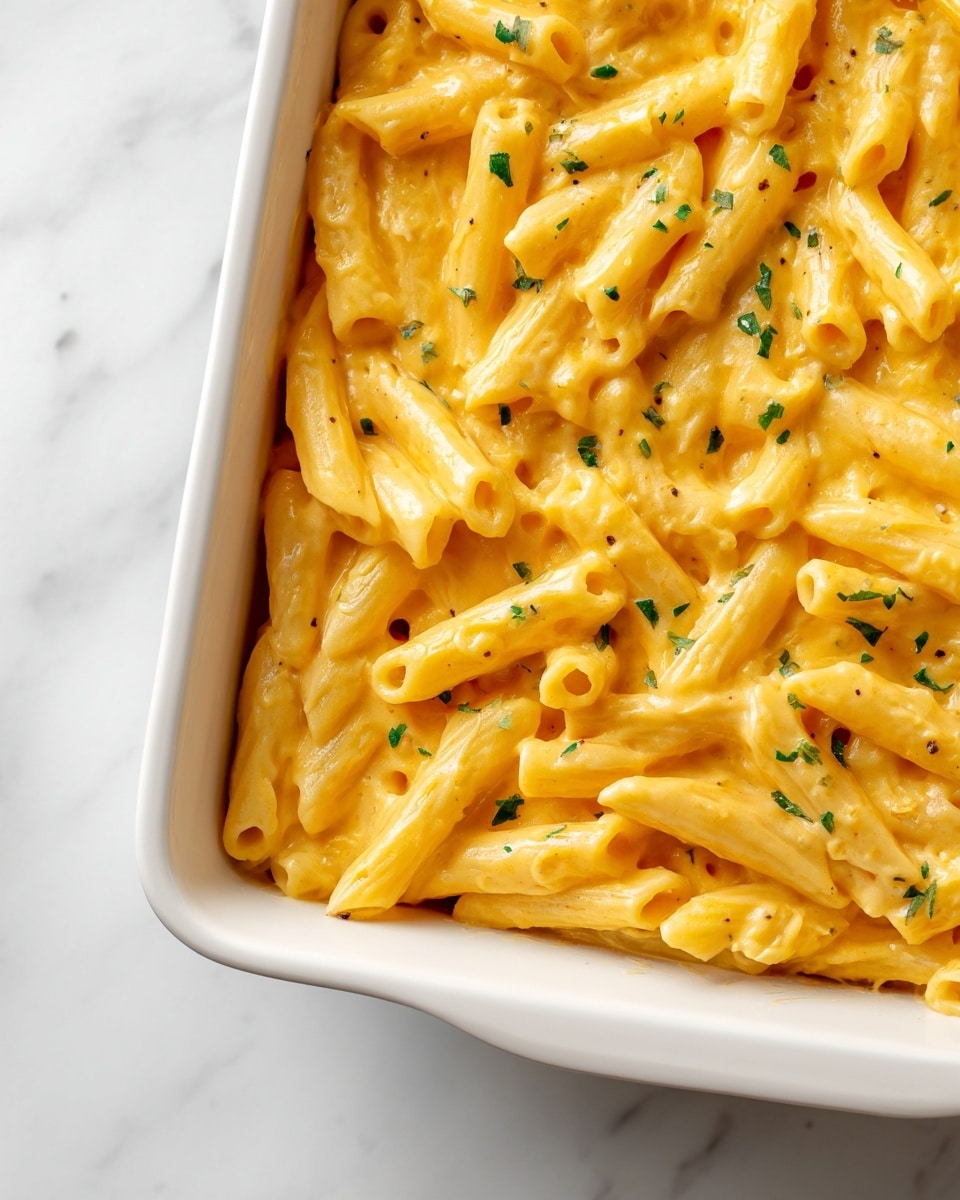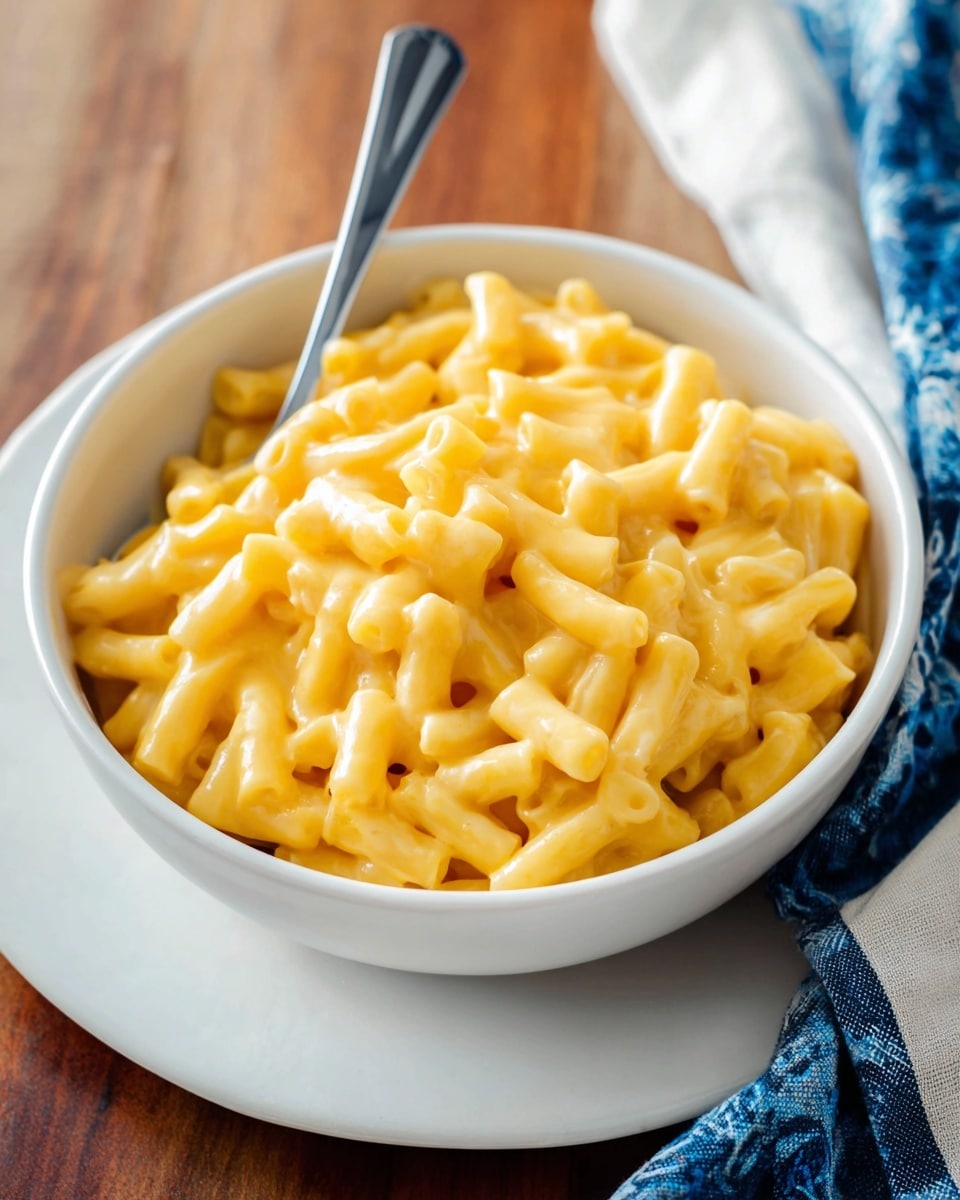If you’re craving comfort food that’s rich, creamy, and downright irresistible, you’ve got to try my Real Stovetop Mac and Cheese Recipe. It’s quick to whip up, with just a handful of simple ingredients, but the result is anything but basic. I love this recipe because it’s exactly how mac and cheese should taste—cheesy, slightly tangy, and packed with cozy flavors. Stick around, and I’ll walk you through every step so you can nail it perfectly in your kitchen.
Why You’ll Love This Recipe
- True simplicity: Just a few ingredients come together to create a deeply flavorful, creamy dish.
- No baking required: This stovetop method means you’ll have dinner ready fast without dirtying extra pans.
- Customizable warmth: A tiny pinch of cayenne or hot sauce adds just the right kick to brighten up the cheesy goodness.
- Kid-approved comfort: My family goes crazy for this, and I bet yours will too!
Ingredients You’ll Need
The magic of this Real Stovetop Mac and Cheese Recipe lies in using quality basics that combine to create a creamy, cheesy sauce without fuss. Plus, I’ll share tips so you know what to look for when shopping for your ingredients.
- Macaroni noodles: Regular elbow macaroni works best here, but you can swap in whole wheat for a nuttier flavor and added fiber.
- Salt: Essential for seasoning the pasta water so your noodles are flavorful from the inside out.
- Heavy cream: This gives the sauce its silky texture—don’t skimp if you want that authentic richness.
- Sharp cheddar cheese: Go for a good quality sharp cheddar for that classic tang and depth in flavor.
- Mustard powder: This little helper boosts the cheese flavor without adding heat.
- Garlic powder and onion powder: Simple spices that add subtle savory notes to round out the sauce.
- Cayenne pepper or hot sauce: Just a tiny hint for warmth; feel free to adjust based on your spice preference.
Variations
I love that the Real Stovetop Mac and Cheese Recipe feels like a blank canvas—it’s easy to adapt based on what you have or what mood you’re in. Here’s how I like to switch things up, and I encourage you to make it your own too.
- Add veggies: Stirring in steamed broccoli or sautéed spinach gives it a pop of color and nutrition, making me feel better about indulging!
- Swap the cheese: Mixing in Parmesan or Gruyère amps the flavor, creating a more sophisticated taste for special dinners.
- Make it gluten-free: Use gluten-free pasta like the corn and quinoa blend I trust—just make sure it holds up well in boiling water.
- Spice it up: For bold flavor, try smoked paprika or a dash of hot sauce instead of cayenne pepper.
How to Make Real Stovetop Mac and Cheese Recipe
Step 1: Cook the Pasta Perfectly
Start by bringing a medium pot of water to a rolling boil and add your salt—this is key to flavor your macaroni. Add the noodles and cook them until they’re just al dente, which usually means firm to the bite but not crunchy. Check the package instructions and start tasting a minute or two before the recommended time—I’ve found this helps avoid mushy noodles, which can happen if you overcook. Once cooked, drain but don’t rinse; you want to keep some starch on the noodles to help the sauce cling.
Step 2: Make the Creamy Cheese Sauce
Put your empty pot back on medium heat and pour in the heavy cream. Let it gently come to a boil—this is where the magic starts! Timing here is important: once it boils, set your timer for exactly one minute to let it thicken just the right amount. This extra step ensures the sauce won’t be too thin once the cheese hits the pot.
Step 3: Incorporate Cheese and Spices
After that minute, toss in your sharp cheddar, mustard powder, garlic powder, onion powder, and cayenne pepper or hot sauce. Stir continuously until the cheese melts smoothly into a luscious sauce—no lumps! If the sauce feels too thick, you can add a splash of the reserved pasta water (if you saved some) to loosen it up. This step requires patience; keep stirring gently and avoid high heat to prevent the cheese from breaking or becoming grainy.
Step 4: Combine Pasta and Sauce
Add the drained pasta back into the pot and stir carefully until every noodle is decadently coated. This is the moment when your stovetop mac and cheese comes to life. Give it a quick taste, and add salt if you feel it needs it—sharp cheddar is salty, but sometimes a pinch more makes all the difference. Once ready, remove from heat and serve immediately for that perfect creamy texture.
Pro Tips for Making Real Stovetop Mac and Cheese Recipe
- Don’t skip the mustard powder: I was skeptical at first, but mustard powder really boosts the cheddar’s flavor without tasting like mustard.
- Use fresh shredded cheese: Pre-shredded cheese has anti-caking agents that can make sauces less smooth—trust me, freshly grated cheese melts so much better!
- Keep the heat moderate: Cooking the sauce gently prevents the cheese from separating and keeps the texture silky.
- Taste as you go: Your salt and spice preferences matter—adjust seasoning just before serving for the best flavor.
How to Serve Real Stovetop Mac and Cheese Recipe

Garnishes
I usually finish mine with a sprinkle of finely grated Parmesan and a dusting of toasted breadcrumbs for an irresistible crunch contrast. Sometimes, a few fresh herbs like chopped parsley or chives add a bright note that balances the richness perfectly.
Side Dishes
For a full meal, I love pairing this mac and cheese with a crisp green salad or some roasted vegetables like Brussels sprouts or asparagus. Crispy bacon or a tangy coleslaw also complement the creamy pasta beautifully.
Creative Ways to Present
When I throw dinner parties, I like serving the mac and cheese in individual mini cast-iron skillets. It feels special and keeps the pasta warm longer. Adding a sprinkle of truffle oil or a few sun-dried tomatoes on top makes it feel fancier without any extra fuss.
Make Ahead and Storage
Storing Leftovers
My best method is to store leftovers in an airtight container in the fridge for up to 3 days. I personally like to add a splash of milk or cream before reheating to bring back the creaminess, because mac and cheese tends to thicken as it cools.
Freezing
I’ve frozen this mac and cheese a couple of times successfully by portioning it into freezer-safe containers. When you thaw it, it won’t be quite as creamy as fresh but still delicious—just reheat gently with a bit of cream to loosen it up.
Reheating
Reheating low and slow is key. I like warming it on the stovetop over low heat, stirring frequently and adding small amounts of cream to keep it smooth. You can microwave it too, but do short bursts and stir in between to avoid drying out or splitting.
FAQs
-
Can I use other types of cheese for this recipe?
Absolutely! While sharp cheddar is classic, mixing in cheeses like Gruyère, Fontina, or even Monterey Jack can add interesting flavors and meltability. Just be sure to use cheeses that melt smoothly for the best sauce texture.
-
What’s the best way to avoid clumpy cheese sauce?
Use freshly grated cheese instead of pre-shredded, which tends to have additives that prevent smooth melting. Also, keep the heat moderate when melting the cheese and stir constantly. Adding cream to a boil and removing from heat before adding cheese helps keep the texture silky.
-
Can I use milk instead of heavy cream?
You can substitute whole milk, but the sauce won’t be quite as rich and creamy. To boost creaminess with milk, try adding a tablespoon of butter or a tiny bit of flour for thickening.
-
Is this recipe suitable for a gluten-free diet?
Yes! Just swap the pasta for a sturdy gluten-free variety, such as corn and quinoa blend noodles. The sauce itself is naturally gluten-free.
-
How long is stovetop mac and cheese good in the fridge?
Stored properly in an airtight container, it’ll keep well for about 3 days. After that, the textures and flavors might start to decline.
Final Thoughts
This Real Stovetop Mac and Cheese Recipe is close to my heart because it’s become my go-to comfort dinner that my family consistently asks for. It hits that sweet spot between creamy, cheesy, and downright comforting without any complicated steps. If you haven’t made stovetop mac and cheese this way before, I really encourage you to give it a try—you’ll enjoy how easy it is to customize and how delicious it tastes. Trust me, once you make it, this recipe just might become your new comfort food staple too!
Print
Real Stovetop Mac and Cheese Recipe
- Prep Time: 10 minutes
- Cook Time: 10 minutes
- Total Time: 20 minutes
- Yield: 3 servings
- Category: Main Dish
- Method: Stovetop
- Cuisine: American
Description
A creamy, classic stovetop mac and cheese made with sharp cheddar cheese and a touch of spices, delivering a rich and comforting dish that’s quick and easy to prepare.
Ingredients
Pasta
- 8 ounces (2 cups) regular or whole-wheat macaroni noodles
- 2 teaspoons salt, for the pasta cooking water
Sauce
- ⅓ cup heavy cream
- 1 ⅓ packed cups (5 ounces) grated sharp cheddar cheese
- ½ teaspoon mustard powder
- ⅛ teaspoon garlic powder
- ⅛ teaspoon onion powder
- Tiny pinch of cayenne pepper, or a dash of your favorite hot sauce
Instructions
- Boil Pasta: Bring a medium pot of water to a boil. Add the macaroni noodles and 2 teaspoons of salt. Cook the pasta until al dente according to the package instructions. Meanwhile, have all your ingredients measured and ready, combining the dry spices in a small bowl.
- Drain Pasta: Drain the cooked pasta in a colander and set aside.
- Prepare Sauce: Return the emptied pot to medium heat. Immediately pour in the heavy cream and bring it to a boil. Once boiling, set a timer for 1 minute to cook the cream slightly.
- Make Cheese Sauce: After the minute is up, add the grated sharp cheddar cheese and the prepared dry spices (mustard powder, garlic powder, onion powder, and cayenne pepper). Stir continuously until the cheese is fully melted and the sauce becomes smooth and creamy.
- Combine Pasta and Sauce: Add the drained pasta back into the pot with the cheese sauce. Stir well to coat all the noodles evenly with the creamy cheese sauce.
- Season and Serve: Remove the pot from heat. Taste your mac and cheese and season with additional salt if needed. Serve immediately while hot and creamy.
Notes
- Make it gluten free: Substitute your favorite sturdy gluten-free noodles, such as a corn and quinoa blend.
- Change it up: For a more sophisticated flavor, sprinkle bowls with finely grated Parmesan cheese and toasted bread crumbs. You can also add steamed broccoli or other vegetables for added nutrition and texture.
- How to reheat: Best enjoyed fresh, but can be gently reheated in the microwave or on the stove. Avoid overheating to prevent separation of the sauce.
Nutrition
- Serving Size: 1 serving (about 1 cup)
- Calories: 420 kcal
- Sugar: 2 g
- Sodium: 550 mg
- Fat: 24 g
- Saturated Fat: 14 g
- Unsaturated Fat: 8 g
- Trans Fat: 0.3 g
- Carbohydrates: 35 g
- Fiber: 2 g
- Protein: 15 g
- Cholesterol: 85 mg



